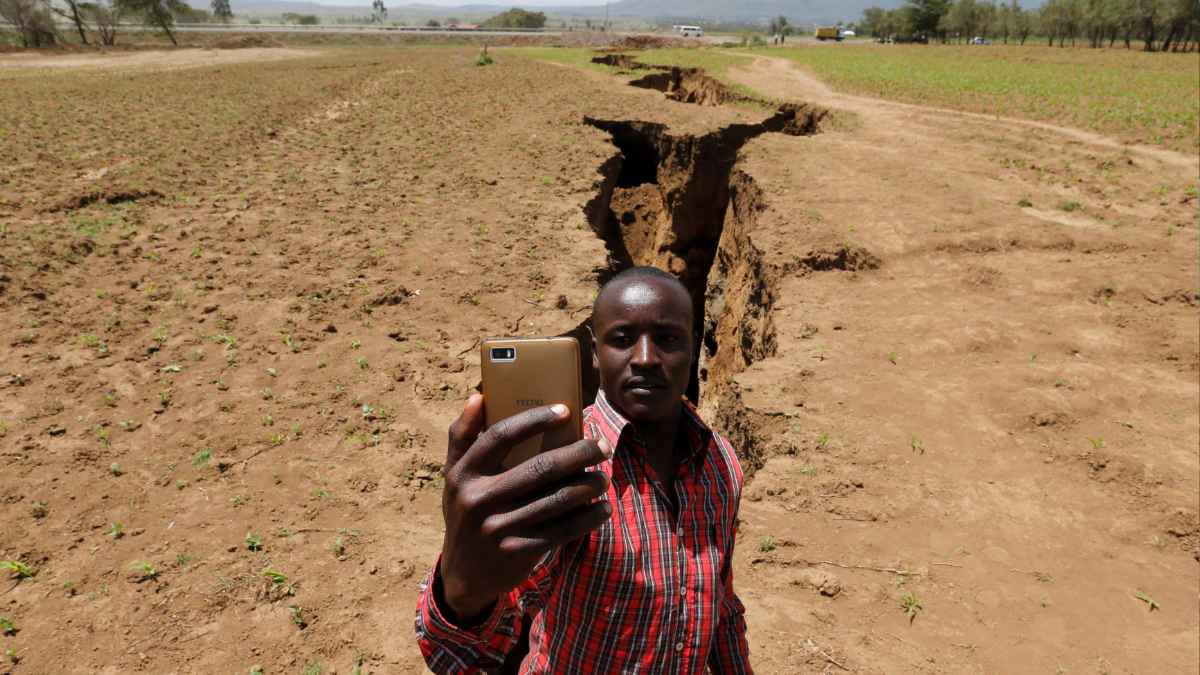A dramatic transformation is taking place in Africa as tectonic forces push the continent towards the formation of a new ocean. At the center of this change is the East African Rift System, a vast network of rifts and faults that is completely reshaping the geography of the region at an accelerating pace. Also, with the plates moving apart faster than was thought a few years ago, scientists are discovering surprising details about the future of this phenomenon. This will have a dramatic impact on Africa’s landscape and ecosystems.
The African continent is currently undergoing a dramatic transformation. As we said, the protagonists are the tectonic plates and the East African Rift System, which stretches from Mozambique to the Red Sea. And, according to studies, the movement and separation of these plates at an accelerated rate will reshape the continent’s landscape and ecosystems over the next millennia.
However, this process, once thought to take millions of years, is now estimated to occur in as little as a million years, if not sooner. Thus, the formation of a new ocean in Africa may be closer than scientists thought.
Tectonic activity that is transforming Africa
The movement of the African and Somali plates is approximately 0.8 centimeters per year. This is driving the formation of a huge rift in East Africa. In the Ethiopian desert, this rift extends for 60 kilometers and reaches depths of 10 meters. These changes, while slow on a human time scale, mark the early stages of a major geological event: the birth of a new ocean.
Cynthia Ebinger, a geoscientist at Tulane University, highlights the accelerated pace of this transformation and that there are events that could further accelerate the process. “We’ve narrowed the time frame to about a million years, possibly even half that,” she said. Furthermore, he added: “There may be a major seismic event, such as an earthquake, that could further accelerate the process. However, predicting such events accurately remains a challenge.”
Echoes of the past: the creation of a new ocean off the African coast
The formation of the East African Rift mirrors the creation of the Atlantic Ocean. It is an event that took place millions of years ago, making it the only place on Earth where continental crust is transforming into oceanic crust in real time. It is a unique opportunity for scientists to study the intricate details of this transformation, including the processes that govern the movement of tectonic plates and the formation of new geological features.
In 2005, an event in Ethiopia highlighted the volatility of rifting. More than 420 earthquakes in a short period created a large rift in the Afar region. What would normally develop over centuries occurred in a matter of days. This challenged long-held assumptions about geologic time scales.
Potential impacts of a new ocean formation
The formation of a new ocean in Africa could dramatically alter its geography. Landlocked countries such as Zambia and Uganda could gain coastlines, which would reshape their ecosystems and economies. Here are some of the potential impacts of an ocean formation on the continent:
- Geographic changes: creation of new coastlines and division of the African continent.
- Economic implications: emergence of new commercial opportunities for previously landlocked countries.
- Ecosystem changes: formation of marine habitats in places where there were none before.
- Infrastructure challenge: necessary adjustments in land management and coastal infrastructure.
If you found this article interesting and want to know more news about science, just visit the specialized section of this digital website.







